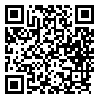Volume 4, Issue 4 (12-2013)
jdc 2013, 4(4): 218-225 |
Back to browse issues page
Download citation:
BibTeX | RIS | EndNote | Medlars | ProCite | Reference Manager | RefWorks
Send citation to:



BibTeX | RIS | EndNote | Medlars | ProCite | Reference Manager | RefWorks
Send citation to:
Ahmad Nasrollahi S, Alibakhshi H. Titanium dioxide in sunscreen products. jdc 2013; 4 (4) :218-225
URL: http://jdc.tums.ac.ir/article-1-5054-en.html
URL: http://jdc.tums.ac.ir/article-1-5054-en.html
1- مرکز آموزش و پژوهش بیماریهای پوست و جذام , snasrollahi@tums.ac.ir
2- دانشکده داروسازی
2- دانشکده داروسازی
Abstract: (14360 Views)
The use of sunscreens should also be recommended in order to work against all kind of ultarviolet (UV)-induced skin damage such as photoallergies, skin wrinkles, sunburn or even skin cancer. Sunscreens contain chemical filters (organic absorb regularly UVB radiation) and physical filters (e.g., TiO2 and ZnO). The second group has been said to reflect and scatter UVB and UVA radiation. TiO2 is also extensively used in sunscreen formulations as active broadband sunscreens that blocks both UVB (290–320 nm) and UVA (320–400 nm). Although titanium dioxide is listed as a safe pigment, with no known adverse effects when it is used in cosmetics, but we should concern about ultrafine or nanoparticle form of titanium dioxide. If titanium dioxide particles used to act as a sunscreen are small enough, they can penetrate the cells, leading to photocatalysis within the cell, and cause DNA damage after exposure to sunlight.
Type of Study: Review |
Subject:
Special
Received: 2013/10/10 | Accepted: 2013/11/24 | Published: 2014/03/9
Received: 2013/10/10 | Accepted: 2013/11/24 | Published: 2014/03/9
Send email to the article author
| Rights and permissions | |
 |
This work is licensed under a Creative Commons Attribution-NonCommercial 4.0 International License. |





